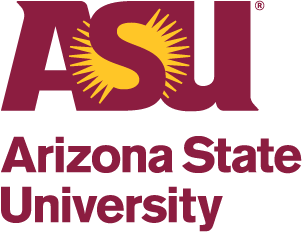You can’t manage what you can’t measure: Implications of Scope 3 Emissions
March 12, 2021
 By: Dylan Shapiro and Rutva Patel, Masters students working with ASU LightWorks on the Digital Carbon Warehouse
By: Dylan Shapiro and Rutva Patel, Masters students working with ASU LightWorks on the Digital Carbon Warehouse
This week’s blog post will address some of the nuances and misconceptions of the monster-under-the-bed that is scope 3 emissions. Diving right in, what really distinguishes scope 3 from scopes 1 and 2? The US Environmental Protection Agency (EPA) defines scope 3 as, “the result of activities from assets not owned or controlled by the reporting organization, but that the organization indirectly impacts in its value chain.” A value chain is the full network and processes that support a particular business. This scope 3 definition is a very high-level explanation that creates a lot of gray areas for businesses and institutions. This ambiguity, complemented by the fact that organizations are not mandated to report on scope 3, takes the pressure off industries to address a significant aspect of decarbonization, let alone in a meaningful way. Scope 3 emissions are the epitome of the last mile and no marathon is complete until one goes the full distance. Greenhouse Gas Protocol's accounting and reporting standard, "Technical Guidance for Calculating Scope 3 Emissions" provides a helpful animation to visualize what activities are associated with scope 3 emissions.
Let’s take a closer look at what’s going on.


 The WE Empower Challenge honors innovative women leaders from around the world who are pushing the SDGs forward through sustainable business practices and inspiring others to follow suit. The opportunity recognizes their innovative work and provides Awardees with capacity-building training sessions and opportunities to connect with an unparalleled global network to advance their enterprises.
The WE Empower Challenge honors innovative women leaders from around the world who are pushing the SDGs forward through sustainable business practices and inspiring others to follow suit. The opportunity recognizes their innovative work and provides Awardees with capacity-building training sessions and opportunities to connect with an unparalleled global network to advance their enterprises.

 Researchers at the Biodesign Swette Center for Environmental Biotechnology and their colleagues have been awarded the 2021 Rudolph Hering Medal from the American Society of Civil Engineers. Their lauded study describes new approaches to rid ecosystems of a dangerous chlorinated chemical known as trichloroethene.
Researchers at the Biodesign Swette Center for Environmental Biotechnology and their colleagues have been awarded the 2021 Rudolph Hering Medal from the American Society of Civil Engineers. Their lauded study describes new approaches to rid ecosystems of a dangerous chlorinated chemical known as trichloroethene.
 With more than 250 presenters, this event will dig into best practices for community-university collaborations. Registration is free. March 24-26.
With more than 250 presenters, this event will dig into best practices for community-university collaborations. Registration is free. March 24-26.  Want to take your research or teaching abroad? Thinking about applying for Fulbright? Join the Office of the University Provost on March 24 for ASU’s Fulbright Day. There will be a number of information sessions covering the Fulbright specialist, scholar and student programs. The event is open to all ASU faculty, staff and students.
Want to take your research or teaching abroad? Thinking about applying for Fulbright? Join the Office of the University Provost on March 24 for ASU’s Fulbright Day. There will be a number of information sessions covering the Fulbright specialist, scholar and student programs. The event is open to all ASU faculty, staff and students.
 Margaux Hein is an ecologist specializing in restoring coral reefs and linking theory to practice. Her work seeks to better assist managers and practitioners in designing, implementing, and monitoring their restoration efforts.
Margaux Hein is an ecologist specializing in restoring coral reefs and linking theory to practice. Her work seeks to better assist managers and practitioners in designing, implementing, and monitoring their restoration efforts.
 The Urban Resilience Project at Island Press has published a free, online e-book:
The Urban Resilience Project at Island Press has published a free, online e-book: 

 Dave White, deputy director of ASU's Global Institute of Sustainability and Innovation, was featured March 8 on the KAET news and current affairs program Horizon, where he discussed the dependability of electricity, gas and water in times of extreme and/or unexpected weather.
Dave White, deputy director of ASU's Global Institute of Sustainability and Innovation, was featured March 8 on the KAET news and current affairs program Horizon, where he discussed the dependability of electricity, gas and water in times of extreme and/or unexpected weather.





 In this
In this 
 Last month's winter storms proved Texas' utility systems are not prepared to persevere through extreme weather, but what about the rest of the nation? Or the planet?
Last month's winter storms proved Texas' utility systems are not prepared to persevere through extreme weather, but what about the rest of the nation? Or the planet?
 Gary Dirks, senior director of the Julie Ann Wrigley Global Futures Laboratory and executive director of ASU LightWorks, recently sat down for a conversation with Marc Serber from the International Policy Digest. In this exchange, Dirks shares ASU's history in energy research and why this pandemic has shined a brighter light on the need to transition fuel sourcing and production away from fossils and to renewables.
Gary Dirks, senior director of the Julie Ann Wrigley Global Futures Laboratory and executive director of ASU LightWorks, recently sat down for a conversation with Marc Serber from the International Policy Digest. In this exchange, Dirks shares ASU's history in energy research and why this pandemic has shined a brighter light on the need to transition fuel sourcing and production away from fossils and to renewables.